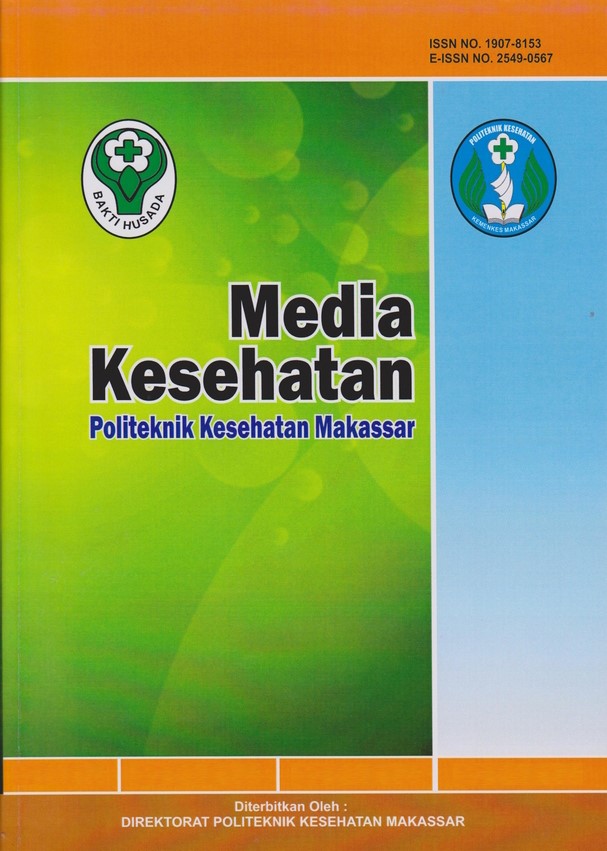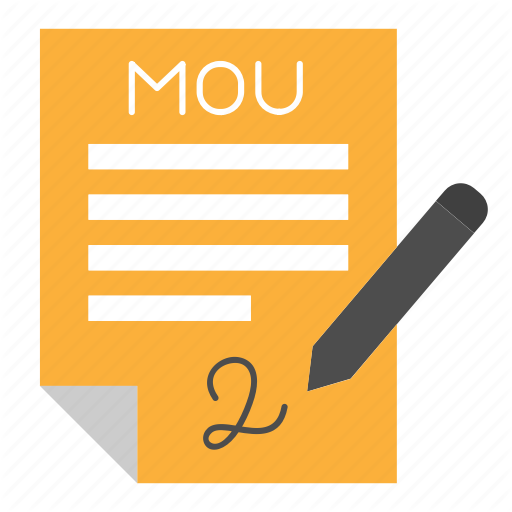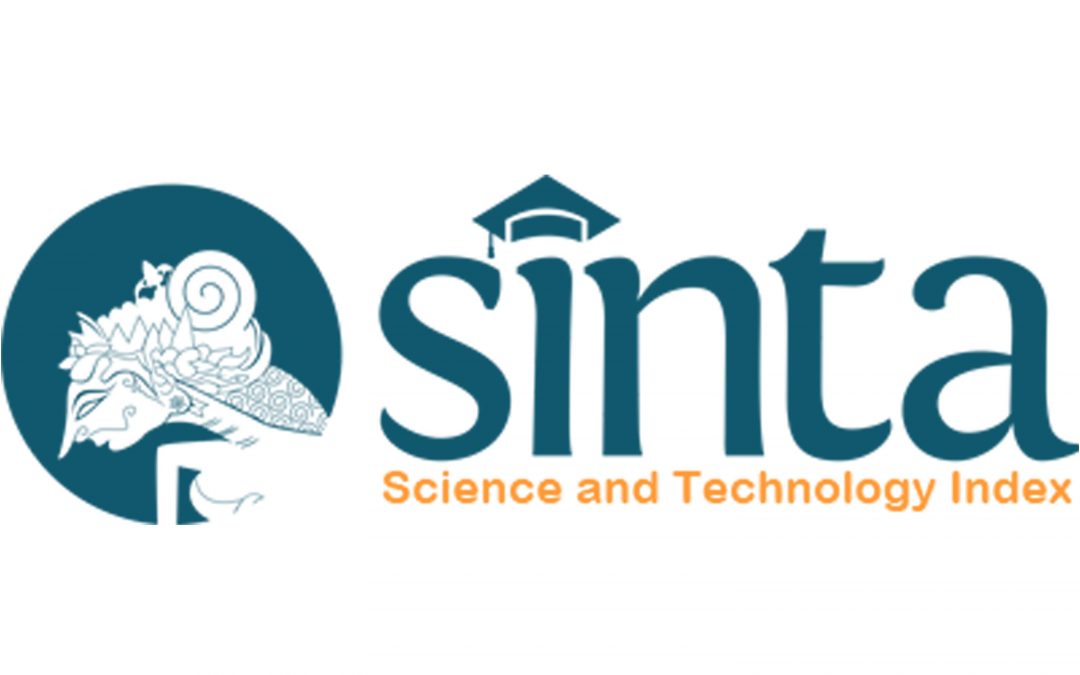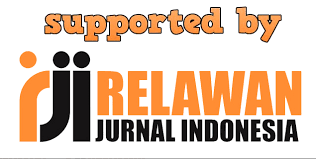Family and Socio-Cultural Support on the Risk of Anemia in Pregnant Women
DOI:
https://doi.org/10.32382/medkes.v19i1.563Keywords:
Anaemia Risk; Family Support; Pregnant Women; Socio-CulturalAbstract
Based on anemia data obtained from the results of medical records at the Lepo-lepo Health Center in Kendari, 128 (11.07%) pregnant women experienced anemia from 1,156 patients who checked their pregnancy in 2013, there were 112 (6.68%) pregnant women who experienced anemia from 1,675 patients checked their pregnancy, and in 2014 was 97 (5.48%) pregnant women had anemia from 1,768 patients who checked their pregnancy. This study aimed to analyze the sociocultural relations and family support with the incidence of anemia in pregnant women. The research method used was analytic observational with a Cross-Sectional Study approach. The total sample was 33 pregnant women with a purposive sampling technique. The study found that most pregnant women still experienced anemia due to a lack of family support. The amount of family support a mother receives affects the anemia of pregnant women. This effect can interfere with the psychological health of pregnant women, such as experiencing stress. For the mother to feel calm and at ease during pregnancy, it is hoped that the pregnant woman's family can provide full support so that there is a sociocultural relationship and family support with the incidence of anemia in pregnant women with each value ρ <α (0.05). It can be concluded that there is a relationship between sociocultural and family support with the incidence of anemia in pregnant women. As a recommendation in research to improve sociocultural relationships and family support with the incidence of anemia in pregnant women
References
Arifuddin H, Ahmad M, As’ad S, Husin F, Usman AN, Maddeppungeng M. The Effect of Deppamil Dangke to Pregnant Women with Chronic Energy Deficiency on the Outcome of Newborn Babies in Enrekang Regency. Poltekita J Ilmu Kesehat. 2023;17(1):81–8.
Yenny Aulya, Jenny Anna Siauta YN. Analisis Anemia Pada Remaja Putri. J Penelit Perawat Prof [Internet]. 2022;4(Anemia Pada Remaja Putri):1377–86. Available from: http://jurnal.globalhealthsciencegroup.com/index.php/JPPP
Fithra Dieny F, Khaira Maadi A, Sandi Wijayanti H, Arif Tsani AF, Choirunissa C. Asupan Zat Gizi Dan Kadar Hemoglobin Wanita Prakonsepsi Di Kabupaten Semarang. Indones J Hum Nutr. 2019;6(2):70–83.
Christin Desi Anggreyenti, Apoina Kartini, Martini Martini. Media Edukasi Terhadap Peningkatan Pengetahuan Ibu Hamil dalam Pencegahan Stunting : Literature Review. Media Publ Promosi Kesehat Indones. 2022;5(12):1532–9.
Puspikawati SI, Sebayang SK, Dewi DMSK, Fadzilah RI, Alfayad A, Wrdoyo DAH, et al. Pendidikan Gizi tentang Anemia pada Remaja di Kecamatan Banyuwangi Jawa Timur. Media Gizi Kesmas. 2021;10(2):278283.
Gasong LS, Damayanthi E, Marliyati SA, Martianto D. the Relationship Between Nutritional Status and Nutrient Intake With Anemia Incidence in Adolescent Girls in Kupang Indonesia. Ijpsr [Internet]. 2019;10(9):4251–6. Available from: www.journal.uta45jakarta.ac.id
Wiafe MA, Apprey C, Annan RA. Patterns of Dietary Iron Intake, Iron Status, and Predictors of Haemoglobin Levels among Early Adolescents in a Rural Ghanaian District. J Nutr Metab. 2020;2020.
Sudirman J, Syafar M, Jusuf EC, Sulawesi S, Sulawesi S, Sulawesi S. The Effect of Sombere Education on Stress Levels in Primigravida Pregnant Women. 2023;21(1):68–76.
Sudirman J, K RE, Ohorella F. Upaya Menjaga Kesehatan Mental Ibu Hamil melalui Peningkatan Pengetahuan dan Keterampilan di Masa Pandemi Covid-19. 2022;1(02):28–34.
Anggraeni MD, Fatoni A, Setiyani R. Food consumption as a risk factor of anemia among indonesian pregnant women: A cross-sectional study among javanese ethnic group. Open Access Maced J Med Sci. 2021;9(E):552–8.
Akhiruddin A, Sukmawati S, Jalal J, Sujarwo S, Ridwan R. Inside-Outside Circle Instructional Model For Multicultural Education. J Pendidik dan Pengajaran. 2021;54(2):399.
Aini N, Zahariah S. Analisis Faktor Determinan Kualitas Konsumsi Makanan Pada Ibu Hamil Di Kecamatan Sukowono, Kabupaten Jember. Wind Heal J Kesehat. 2022;5(1):453–62.
Sopiah O, Resita C, Setiawan MA. The Relationship of Postpartum Blues, Self Efficacy, Family and Socio-Cultural Support for the Implementation of Postpartum Exercise during the Covid-19 Pandemic at the Telagasari Karawang Community Health Center. Pjaee. 2020;17(9):4565–78.
Gebre A, Mulugeta A. Prevalence of anemia and associated factors among pregnant women in north western zone of tigray, northern ethiopia: A cross-sectional study. J Nutr Metab. 2015;2015(May 2013).
Sulistiyanti A, Selfiani Widodo N, Nirmala Sari D. Correlation of Nutritional Status and Dietary Habit With the Incidence of Anemia in Adolescent Girls. Proceeding Int Conf Sci Heal Technol. 2022;469–75.
Nurazizah YI, Nugroho A, Nugroho A, Noviani NE, Noviani NE. Hubungan Status Gizi Dengan Kejadian Anemia Pada Remaja Putri. J Heal Nutr. 2022;8(2):44.
Puspasari J, Nur Rachmawati I, Budiati T. Family support and maternal self-efficacy of adolescent mothers. Enferm Clin. 2018;28:227–31.
Floridha R, Ekasari T, Zakiyyah M. Hubungan Status Gizi dengan Kejadian Anemia Pada Ibu Hamil di Puskesmas Labruk Kecamatan Sumbersuko Kabupaten Lumajang. Nurs Updat. 2023;14(3):407–13.
Bening S, Margawati A, Rosidi A. Zinc deficiency as risk factor for stunting among children aged 2-5 years. Universa Med. 2017;36(1):11.
Wawan Kurniawan, S. K. M., & Aat Agustini SKM. Metodologi Penelitian Kesehatan dan Keperawatan; Buku Lovrinz Publishing. LovRinz Publishing. 2021.
Tualeka AR. Metodologi Penelitian Kesehatan dan Keselamatan Kerja. Airlangga University Press. 2020.
Bria GE, Nur Rohmah F. Hubungan Status Gizi Dan Usia Dengan Kejadian Anemia Pada Ibu Hamil. KOSALA J Ilmu Kesehat. 2023;11(1):23–9.
Tolaki S, Kasus S, Masyarakat P, Kota P, Tahun K. Makanan Pantang suku Tolaki. 2020;4(2):74–7.
Mariana D, Wulandari D, Padila. Hubungan Pola Makan dengan Kejadian Anemia pada Ibu Hamil di Wilayah Kerja Puskesmas Jalan Gedang Bengkulu. Jks. 2018;1(2):108–22.
Dixon L, Skinner J, Foureur M. The Emotional and Hormonal Pathways of Labour and Birth: Integrating Mind, Body and Behaviour. New Zeal Coll Midwives J. 2013;48:15–23.
Geelhoed D, Agadzi F, Visser L, Ablordeppey E, Asare K, O’Rourke P, et al. Severe anemia in pregnancy in rural Ghana: A case-control study of causes and management. Acta Obstet Gynecol Scand. 2006;85(10):1165–71.
Barahima JJ, Noor NN, Jafar N. Relationship of Economic and Social Culture Status in the First 1000 Days of Life (HPK) Period toward Events of Stunting In Children Ages Of 0-24 Months in Barebbo District Working Area, Bone Regency, 2019. EAS J Humanit Cult Stud. 2019;1(4):206–11.
Downloads
Published
How to Cite
Issue
Section
PDF (Bahasa Indonesia) downloaded: 992















